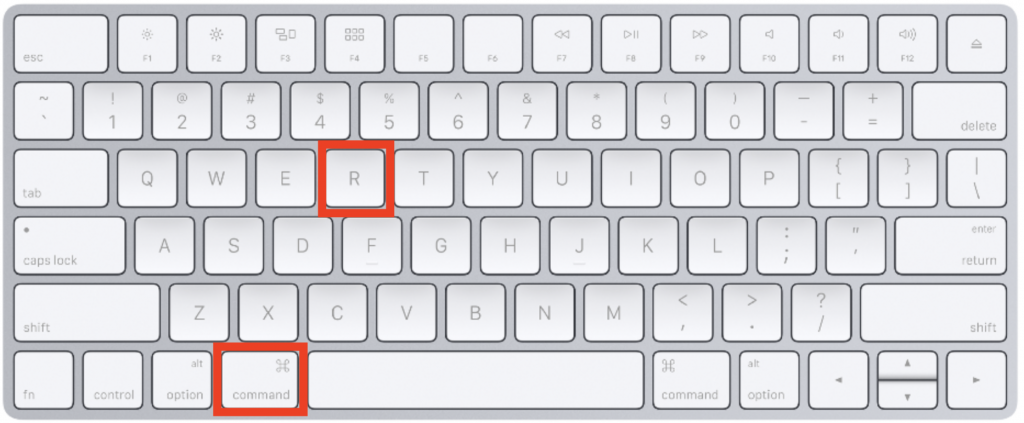Decoding the Refresh Button on Keyboard: Its Function And Importance
Introduction
The refresh button on our keyboard is a tool that we often use but rarely give much thought to. However, it plays an important role in our daily digital navigation. This article will provide a comprehensive exploration of what the refresh button on a keyboard is, how it works, when and why you should use it, and its capacity for boosting productivity. Furthermore, we will discuss troubleshooting methods if your refresh button decides to stop working and answer frequently asked questions in this context.
What is a Refresh Button on Keyboard?
- The refresh button, often neglected, is an integral part of every computer keyboard. Situated on the 'F5' key for the majority of keyboards, this feature holds the potential to update the contents of your window or browser, enabling you to access the most recent version of a web page or document.
- Here are some key points that identify the role and utilization of the refresh button on your keyboard:
1. Data Update: The primary function of the refresh button is to facilitate data updating. Whether you are browsing a dynamic website or making changes to a document on your system, hitting refresh ensures you are viewing the most recent data.
2. Server Communication: On pressing the refresh key, your system communicates with the server, putting a request for updated data. The server, in return, processes this request and sends the latest version of the requested data, to be exhibited on your screen.
3. Diagnosing Connection Issues: Apart from data updating, the refresh button can also help identify internet connection problems. If your web page isn't loading due to a lost internet connection, pressing refresh could aid in diagnosing the issue through error messages.
In summary, the refresh button on your keyboard ensures real-time data display and plays a pivotal role in diagnosing connection issues, enhancing overall productivity.

How Does the Refresh Button on Your Keyboard Work?
Understanding how the refresh button on your keyboard functions can enhance your user experience and enable you to address any unexpected issues. Here's a breakdown of the process that unfolds when you press the refresh button on your keyboard.
- Initiating a Request: As the user presses the refresh button, a request is initiated by the system. Consider this as the beginning of a conversation between your computer and the server.
- Processing the Request: The server picks up the request sent from the system. Its primary task at this point is to decipher the command and compile the most updated data available.
- Returning Updated Data: Once the update data is ready, the server dutifully sends it back to your system. This phase concludes the data exchange that was initiated by the refresh command.
- Displaying Updated Information: Finally, the updated information is presented on your screen. This may include the latest edits on a document or real-time updates on a dynamic webpage.
Furthermore, the refresh button can be instrumental in diagnosing potential connection problems. Imagine surfing the internet and unexpectedly your page fails to load. Clicking the refresh button will generate feedback, such as error messages, that can be particularly helpful in identifying and fixing the internet connectivity issues.
In essence, the refresh button undertakes a complex process each time it is pressed, ensuring your digital content remains current and aiding in troubleshooting connectivity issues.
When and Why Should You Use the Refresh Button?
The refresh button on your keyboard serves as a valuable tool in day-to-day computer operations. Whether you are browsing online or working on a locally stored document, the refresh button ensures you're always updated with the latest content. Here are some specific moments and reasons to use this function:
- Web Browsing: In an era where the internet is highly dynamic and content on websites constantly evolve, the refresh button is indispensable. It is used to fetch the most recent content, ensuring you have the latest updates from your frequented sites. This refresh can be a regular reload or, for a complete refresh disregarding cached data, a hard reload (Ctrl + F5 on most keyboards).
- Active Document Consumption: Often, we have open documents, apps, or files that we regularly update. If these changes aren't instantly reflected, hitting the refresh button provides you with the most current status of your work.
- Troubleshooting: The refresh button is not limited to serving update functions alone; it also breaks through minor digital hitches. If certain elements on a page fail to load properly or you encounter a sudden glitch, the refresh button can sometimes be an uncomplicated resolve.
The effective usage of the refresh button creates an engaging and interactive computer experience. Diligently using this function can keep you ahead with updates, assist you in managing active files, and occasionally, act as a rudimentary troubleshooting tool. Therefore, the importance of the refresh function cannot be overstated, ensuring you're always in sync with your digital universe. Consider it your digital 'Ctrl + R' for 'reality check.'
How can Keyboard Shortcuts Incorporate the Refresh Button for Enhanced Productivity?
The refresh button, commonly located on the 'F5' key of most keyboards, has the potential to significantly improve productivity when smartly integrated into keyboard shortcuts. Keyboard shortcuts not only streamline routine tasks but also make navigation faster and more efficient. Let's delve into how the refresh button can be incorporated into these invaluable shortcuts:
1. Refreshing Your Window or Browser: The most basic function of the 'F5' key is to refresh your window or browser when browsing the internet or working on a document. This function helps in quickly updating the display without having to manually reload the page.
2. Performing a Hard Refresh: For a more thorough updating, 'Ctrl + F5' performs a hard refresh. This function clears the cache and downloads all contents of the website or document again. This is particularly useful when you want to ensure that all elements of a web page are loaded from the newest version available on the server.
3. Refreshing PivotTable data in Excel: Users dealing with spreadsheet programs like Excel have an advanced function at their disposal. The 'Alt + F5' shortcut is used to refresh PivotTable data, offering an easy way to keep a track of all changes in large datasets.
Whenever possible, incorporate these shortcuts into your digital routine as they can save substantial amounts of time and simplify a variety of tasks.
As many studies have shown, the use of keyboard shortcuts can increase productivity significantly. According to Brainscape, users can save about 64 hours per year by employing keyboard shortcuts. Incorporating the refresh button into these shortcuts amplifies these efficiency gains. Understanding how to use shortcuts like these can lead to greater productivity, better time management, and a smoother, more seamless working experience.
What If Your Refresh Button Stops Working? Fixes and Troubleshooting
Does your refresh button seem unresponsive? Here is a straightforward guide to identifying potential problems and resolving the issue.
1. System Restart: Start by performing the simplest fix - a quick restart of your computer. This step can resolve minor glitches that could be preventing the button from working.
2. Keyboard Check: If a system restart doesn't work, it's time to check the keyboard. Try using another keyboard and see if the refresh button works. If it does, the issue may lie with the keyboard hardware.
3. Software Updates: When there's a persisting issue, your computer's software might be the culprit. Ensure your computer software is up-to-date as outdated software may cause compatibility issues.
4. Operating System (OS) Reinstallation: If none of the above steps are fruitful, you might have to consider reinstalling your OS. It's important to back up your data before doing so as this process can erase all existing data.

5. Keyboard Replacement: If every other troubleshoot has failed, your keyboard might have a hardware problem. In such cases, you'll need to replace it.
Remember, troubleshooting requires patience. Start with the easiest solutions before progressing to more drastic measures. Understanding these simple solutions can help you get your refresh button, and subsequently, your work, back on track promptly.
Conclusion
While the refresh button on the keyboard may initially seem insignificant, it plays a substantial role in aiding digital navigation and efficiency. It helps us keep abreast of updates and changes and assists in solving minor glitches. Understanding its function and effective usage can undoubtedly enhance our computer interaction experience.
Related FAQs about what is refresh button on keyboard
Is the refresh button the same across different keyboard types?
While the functionality of the refresh button remains consistent - updating the current browser or window - the location of the button may differ across various keyboard types. In most cases, 'F5' plays the role of the refresh button. However, on some specific keyboards, it might be allocated a different key.
What are the differences in function of the refresh button from various applications?
The core function of the refresh button is to renew or update data. However, the application of refresh varies with different programs. In a browser, it updates the webpage. In Microsoft Excel, it can refresh Pivot Table data. Thus, the exact action depends on the specific software application.
Can using the refresh button frequently harm my computer or its performance?
Frequent use of the refresh button does not harm your computer. It might slightly impact performance if multiple refresh requests are sent in quick succession, as it may require more immediate processing power. However, this impact is negligible and temporary.


